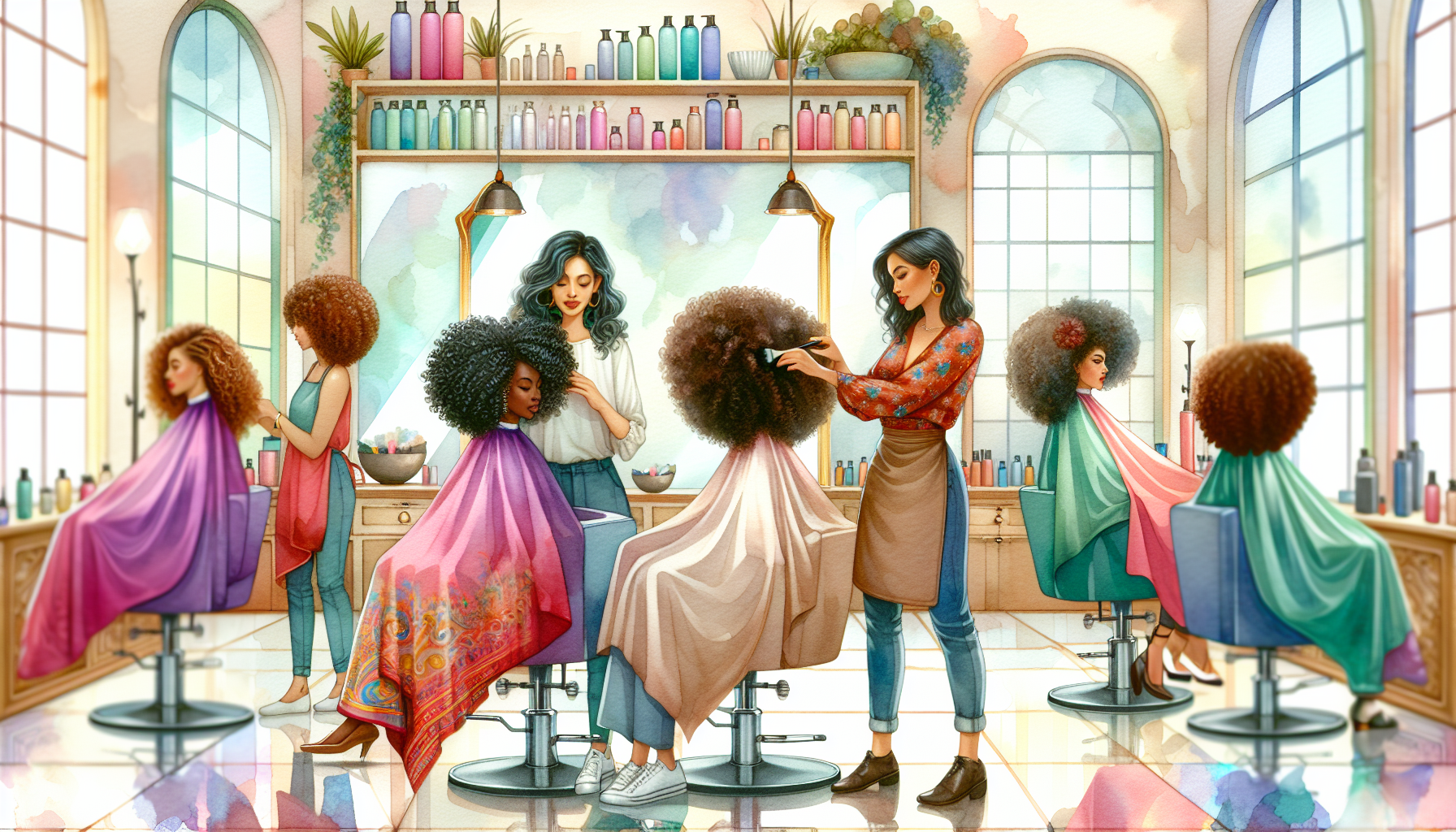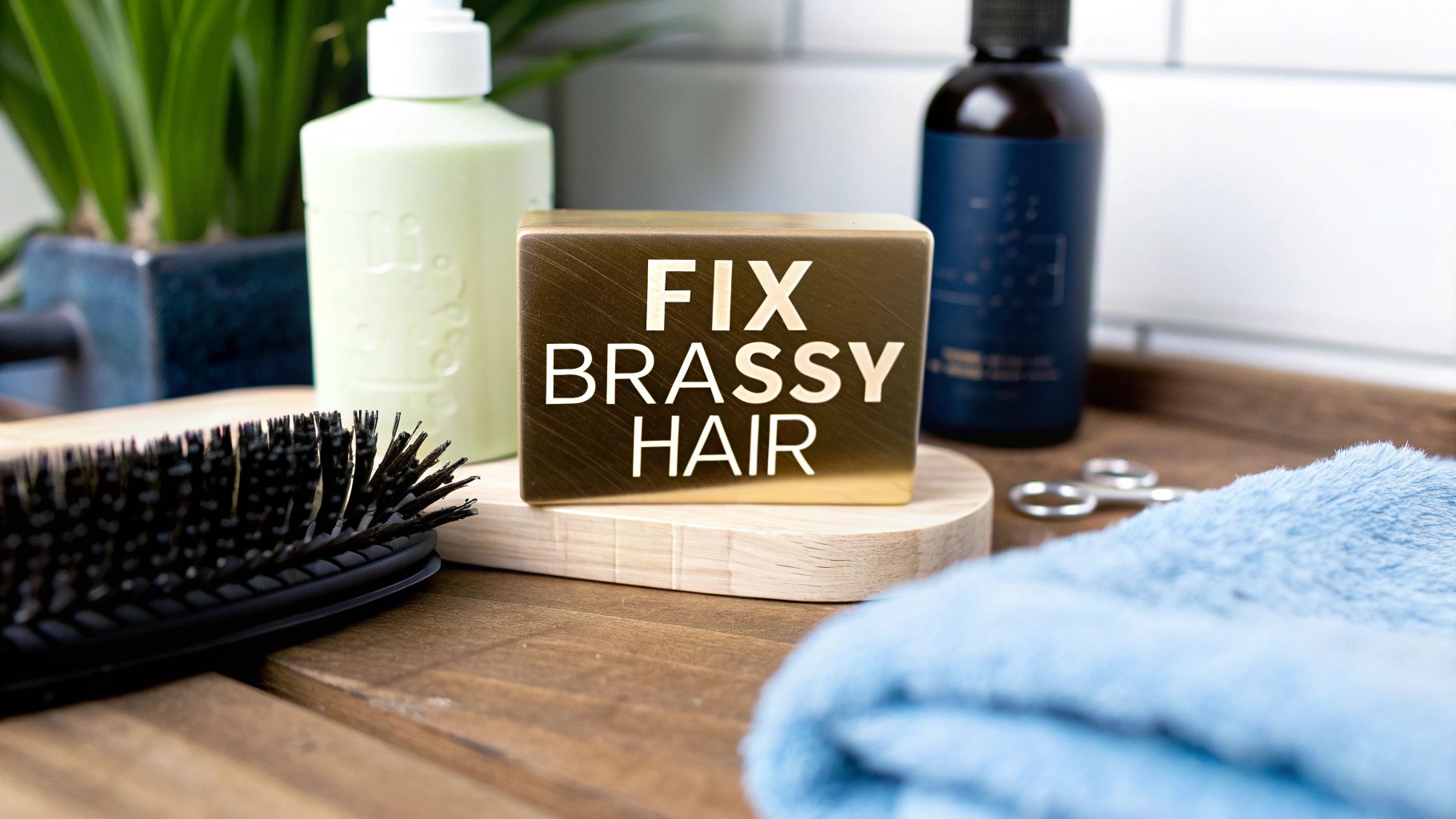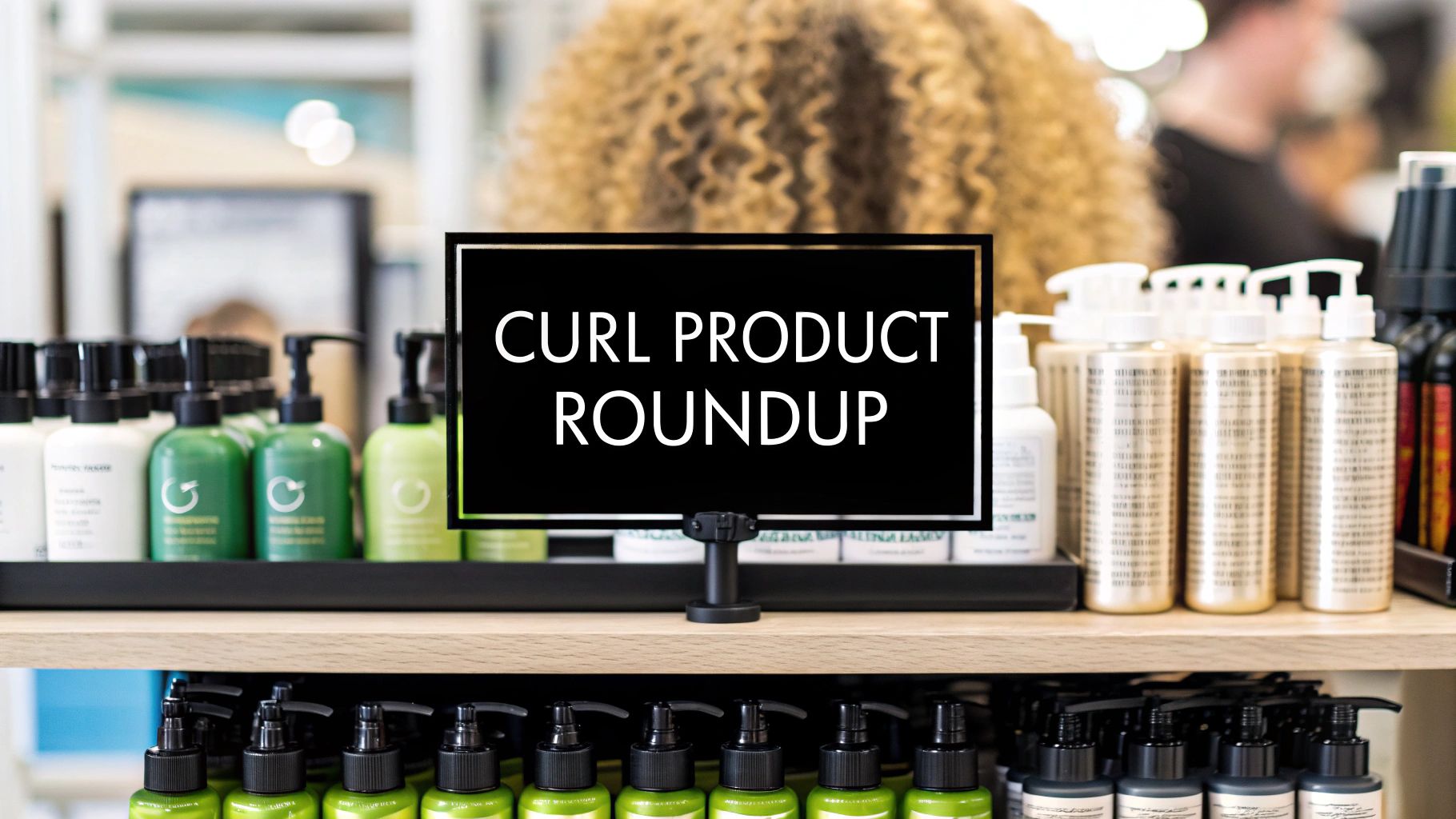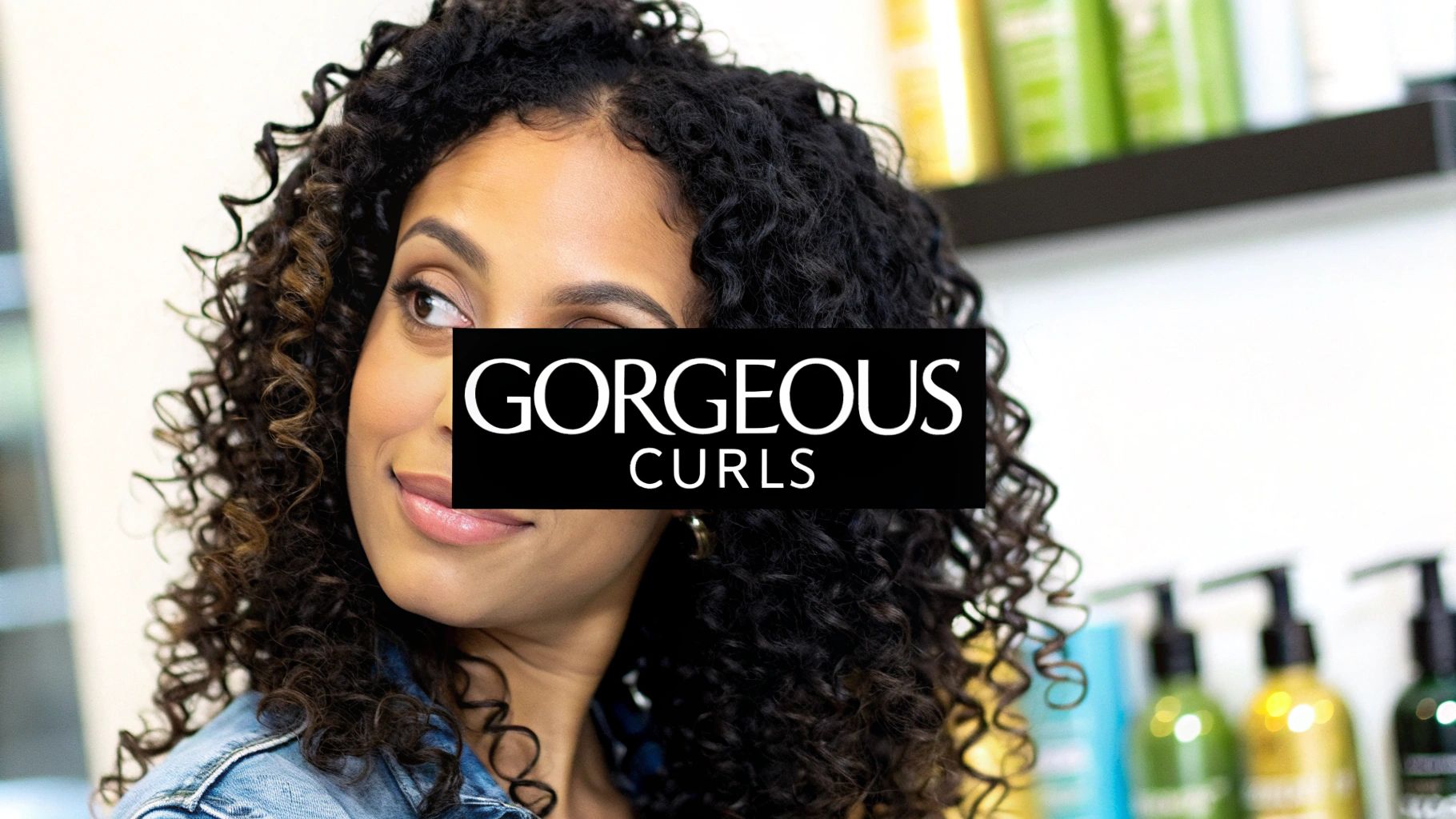If you’ve been searching for curly hair salon treatments that can boost shine, enhance manageability, and celebrate your natural texture, you’re in the right place. A 2024 industry survey found that nearly 60% of individuals with curly hair struggle to find the right professional services—even when they’re willing to invest in top-tier care. The good news: today’s curly hair salons offer specialized solutions, from deep hydration protocols to gentle chemical treatments, all designed to help you say goodbye to frizz and hello to healthy curls. In this guide, you’ll learn what types of treatments are available, how they work, and practical steps to keep your curls looking their best.
Thank you for reading this post, don't forget to subscribe!Explore curly hair salon treatments
You may have noticed that curls behave differently than straight hair. They’re naturally prone to dryness and tangling because oils from the scalp struggle to travel down each twist and turn. This can make standard salon treatments feel incomplete or—worse—ineffective. Curly hair salons understand these unique challenges and offer targeted approaches to hydrating, strengthening, and even altering texture (where desired) without compromising your curl pattern.
Understanding curly hair’s unique structure
Curly hair strands coil in different ways—some form loose waves, while others are tighter spirals. Each bend in the hair shaft creates potential weak spots and dryness points, which is why a one-size-fits-all approach rarely works. The industry calls this high-porosity or medium-porosity hair. Simply put, curls can lose moisture faster and may require more nourishing treatments than straight hair.
- The cuticle layer in curly hair often lifts more easily than in straighter hair, leading to frizz.
- Close to 40% of people with curly hair report scalp dryness or itchiness.
- Curly hair salons typically analyze your curl type and porosity level before recommending a treatment.
Specialized treatments for curly hair
Many curly hair salon treatments revolve around these goals: hydration, definition, and manageability. Unlike generic salon menus, you’ll find options like customized hydration masks, low-heat styling methods, and chemical processes formulated to reduce damage. The main therapies you’ll see include:
- Deep conditioning sessions: Long-duration hydrating masks, often combined with steam, restoring moisture.
- Protein-infused treatments: Amino acids or keratin variants to strengthen the hair shaft.
- Scalp treatments: Massages and clarifying solutions that address dryness or product buildup.
- Customized chemical processes: Formaldehyde-free keratin, cysteine, or “botox” treatments designed for curls.
Deep conditioning and scalp care
Deep conditioning is essential for curly hair because standard conditioners might not penetrate each curl thoroughly. A robust in-salon mask, sometimes warmed with mild heat, helps lock nutrients into your strands. You may also receive a scalp-specific product to soothe dryness or rebalance excess oil. Stylists often follow up with a defining cream that seals in the moisture. Good news—deep conditioning can instantly leave your curls feeling softer and bouncier.
Keratin-based approaches and formaldehyde concerns
Traditional keratin treatments are known to reduce frizz, add shine, and make hair more manageable. However, multiple studies, including data cited by the FDA, note that many keratin products contain formaldehyde or formaldehyde-releasing agents. These chemicals can pose health risks—including eye and nose irritation—especially during blow-drying and ironing, when fumes are released. The American Cancer Society flags formaldehyde as a known carcinogen. If you’re worried about exposure, you might explore formaldehyde-free alternatives or ask your stylist for brand-specific details. Some salons use solutions with plant-based ingredients, labeled as “vegan keratin,” which can offer smoothing benefits while lowering chemical risks.
Consider the pros and cons
Before you commit to any process, it’s helpful to weigh the benefits against potential drawbacks. Curly hair salon treatments offer long-term style improvements, but all chemical and intensive-conditioning processes come with disclaimers. Keep in mind that each person’s hair response is unique. One client might see spectacular results, while another experiences dryness or scalp sensitivity.
Potential benefits for your curls
- Manageability boost: Treatments can reduce daily tangles and help your curls hold a more defined shape.
- Frizz control: With smoother cuticles and less dryness, you’ll likely see fewer flyaways.
- Long-lasting style: A single salon session might keep your hair looking polished for weeks, especially if you follow aftercare advice.
- Healthier look: Deep hydration or protein infusions can minimize breakage and give your curls a vibrant sheen.
Possible risks and side effects
- Overprocessing: High heat or harsh chemicals can weaken the hair shaft, leading to breakage.
- Scalp irritation: Formaldehyde, ammonia, or other strong agents might cause itching or burning sensations.
- Allergic reactions: Certain preservatives can trigger redness or skin rashes.
- Expense: Quality salon treatments can be pricey, and follow-up sessions add to the total cost.
Formaldehyde levels in salons
Formaldehyde can appear in concentrations of 0.08 to 3.47 ppm during the blow-drying phase of certain keratin treatments—levels that may exceed what’s tolerable for some individuals. Even “formaldehyde-free” products can contain related chemicals that release formaldehyde once heated. If you have respiratory sensitivities or concerns, discuss them with your stylist upfront.
Patch tests and safety steps
A quick patch test, usually conducted on a small section of hair and scalp, can reveal any immediate adverse reactions. Many curly hair salons will offer this step before you commit to more extensive procedures. Good news—this test is easier than it sounds! You’ll likely notice any issues early, saving you the frustration of a full-head reaction. Also, confirm your salon’s ventilation system is adequate if you’re planning any treatment that involves heat sealing.
Compare popular treatment types
While a deep conditioning session is relatively straightforward, the world of chemical hair treatments can be more complex. Understanding the differences among keratin, cysteine, botox, and vegan keratin is key to choosing a solution that aligns with your goals and comfort level. Below is a quick comparison table for clarity.
| Treatment | Main Benefit | Potential Drawback |
|---|---|---|
| Traditional keratin | Reduced frizz, straighter look | May contain formaldehyde |
| Formaldehyde-free | Safer for sensitive scalps | Some still have hidden chemicals |
| Cysteine | Strengthens hair bonds, minimal odor | Results can be less dramatic |
| Botox | Smooths cuticle, adds shine | Might need more frequent touch-ups |
| Vegan keratin | Plant-based, cruelty-free | Less availability in some areas |
Traditional keratin vs formaldehyde-free
Traditional keratin treatments often use a protein formula that’s sealed in with heat. They create a smoother, sometimes straighter look. However, you’ll want to confirm the product’s chemical content, as formaldehyde levels can vary widely. Meanwhile, “formaldehyde-free” keratin has become a buzzword. Some brands keep sulfur-containing preservatives that release formaldehyde once heated, so always check labels or ask your stylist for specifics.
Cysteine and botox
Cysteine treatments rely on an amino acid found naturally in hair. They can strengthen the protein bonds in your curls without the need for harsh aldehydes. This option is often recommended for curly hair, because it reduces frizz while preserving curl shape. “Botox” is another smoothing treatment that uses a filler-like action to repair damaged areas in the hair shaft. It’s named after the well-known cosmetic procedure due to its “filling” effect, but it typically does not contain any actual toxins or formaldehyde.
Vegan keratin alternatives
If you follow a plant-based lifestyle, or just want to avoid animal by-products and harsh chemicals, vegan keratin might be a great choice. Some brands harness protein from plants, such as soy or wheat, to achieve smoothing effects. You won’t get the same level of straightening as a traditional keratin blend, but you’ll likely cut down on harmful fumes. Bonus: vegan keratin approaches are usually cruelty-free, too.
Why curly hair salons make a difference
You might ask, “Can’t a regular salon treat curly hair effectively?” While many general salons do offer some curly hair salon treatments, a specialized curly hair salon typically goes beyond the standard approach. From cutting techniques that follow the curl’s natural flow to color application that respects curl elasticity, these experts understand how to preserve health and vitality in every coil.
Custom cuts and styling
A defining feature of curly hair salons is how they cut your curls. Rather than pulling wet hair taut, stylists often trim each curl according to its natural pattern. This approach can prevent the dreaded “triangle” effect and create an even shape when your hair is dry. If you’re deciding where to go, you might check out reviews for a curly hair specialist salon that focuses on textured hair. Customized cuts make an enormous difference in daily styling, saving you frustration and unnecessary product usage.
Coloring curls with care
Coloring curly hair can be tricky because the hair’s porosity may cause uneven pigment absorption. Curly hair salons often employ specialized coloring methods such as:
- Curl-by-curl painting: Applying highlights with attention to each curl’s surface.
- Low-ammonia or ammonia-free formulas: Reduces damage to already delicate strands.
- Pre-color strand tests: Ensures that your hair can handle lightening or pigment saturation.
If you’re interested in adding dimension, consider a dedicated curly hair highlights salon that tailors its techniques to curly texture. This helps avoid patchy or uneven color that can occur when stylists treat curls like straight hair.
Education for lasting health
Curly hair salons often teach you how to replicate salon-level care at home. They might recommend curated product lines or demonstrate styling methods, such as the “squish to condish” method for enhanced moisture. Salons that focus on curly hair typically emphasize:
- Weekly deep conditioning routines
- Using sulfate-free, silicone-free shampoos
- Gentle detangling, starting at the ends and moving upward
- Avoiding tight ponytails or harsh brushes that stress curl patterns
Beyond that, some salons will invite you to a follow-up session or virtual consultation. This approach promotes consistent progress rather than a quick fix. If you’ve been browsing for the best curly hair salon, look for places that deliver not just top-notch treatments but also hands-on education.
Choosing your perfect salon
Whether you’d like a scalp treatment for stubborn dryness or a formaldehyde-free keratin solution, picking the right location can make all the difference. With so many options in the market, you’ll want to do a bit of homework. Start by narrowing your list to salons that specifically highlight curly hair expertise. Then, prepare a set of questions regarding your hair’s unique needs.
Evaluating expertise and prices
Professional stylists specializing in curls should be able to show you a portfolio or talk knowledgeably about your hair’s density, porosity, and pattern. Check if the salon offers a breakdown of curly hair salon prices. Not every top curly hair salon charges sky-high rates, but higher cost sometimes indicates more experienced staff or premium products.
- Ask about training: Did stylists complete advanced curly-hair courses?
- Learn about products: Are they using known curly-friendly brands or custom blends?
- Request a cost breakdown: Some treatments might include scalp analysis, optional steam therapy, or styling.
Reading reviews and setting consultations
Reviews can offer a snapshot of real client experiences. If you see recurring praise for one salon’s handle on fizz, dryness, or coloring especially for curly hair, that’s a great sign. Consider peeking at curly hair salon reviews from a variety of sources. Don’t forget that star ratings don’t tell the full story—someone may rate a salon low for a scheduling hiccup even though the hair services were exceptional.
You can also schedule consultations with up to three salons before settling on one. During these chats, share your hair goals, ask about relevant experience, and discuss potential treatments. If a stylist suggests an intensive chemical approach with little mention of patch testing or safety steps, you may want to keep searching.
Staying consistent with aftercare
Many curly hair salon treatments require some form of upkeep. For formaldehyde-free keratin or cysteine-based therapies, you’ll likely get instructions to avoid washing for a day or two post-treatment, followed by using sulfate-free cleansers. You may need occasional re-treatments every few months, depending on how well you maintain your curls at home. If you struggle with dryness or frizz creeping back, it might be time for another deep conditioning session or a gentle trim.
Protect and maintain your results
After investing time and resources into specialized curly hair salon treatments, you want the benefits to last. This is where diligent aftercare comes in. From adjusting your daily wash routine to selecting the best styling products, each choice can either support or sabotage your results. After all, no professional treatment can stand up to daily neglect.
Daily routines for healthy curls
- Keep cleanses gentle: Using shampoos labeled sulfate-free can help preserve the moisture balance in your curls.
- Condition generously: Follow up washes with moisturizing conditioners, focusing on your lengths and ends.
- Pat, don’t rub: Vigorous towel-drying can create friction and frizz. Opt for a microfiber towel or soft T-shirt fabric.
- Choose air-drying or diffusing: High-heat blowouts can undo the benefits of a salon treatment. If you must use heat, keep it on low and utilize a diffuser attachment.
When you notice dryness creeping in, reorganize your routine. Adding a weekly treatment mask, or a small amount of leave-in conditioner each morning, can help you manage the inevitable shifts in weather or humidity.
Supporting your hair with the right products
Your salon likely recommended specialized formulas, but it never hurts to explore a few others that might suit your curl type or budget. Look for products that:
- Contain minimal sulfates, parabens, and silicones
- Include natural oils (e.g., argan, coconut, or jojoba)
- Offer protein, but not too much, to avoid stiffness
- Provide a balanced mix of hydration and strength
Feel free to check out curly hair salon products available near you. Some salons even create custom formulations in-house. If you’re dealing with persistent breakage or dryness, consult your stylist about adjusting your home routine.
Summary and next step
- Research the variety of curly hair salon treatments available, be it keratin, cysteine, or targeted deep conditioning.
- Weigh each option’s pros and cons. Formaldehyde content, cost, and your personal hair history all matter.
- Pick a specialized salon that emphasizes consultation, patch tests, and thorough aftercare guidance. You might compare local listings, opting to work with a top curly hair salon that has strong client feedback.
- Support your results with daily routines, from gentle washing to mindful product choices.
If you’re looking for a specialized location or simply unsure of where to begin, consider searching for a curly hair salon near me to locate professional stylists familiar with curl-specific needs and challenges. Embrace this journey as a chance to fully enjoy the bounce, definition, and unique beauty that curly hair brings. With the right salon partnership and a little extra daily care, you’ll find that maintaining soft, manageable curls feels easier than ever—even if you’re juggling a busy work life. You’ve got this, and a confident curl routine is well within reach.



